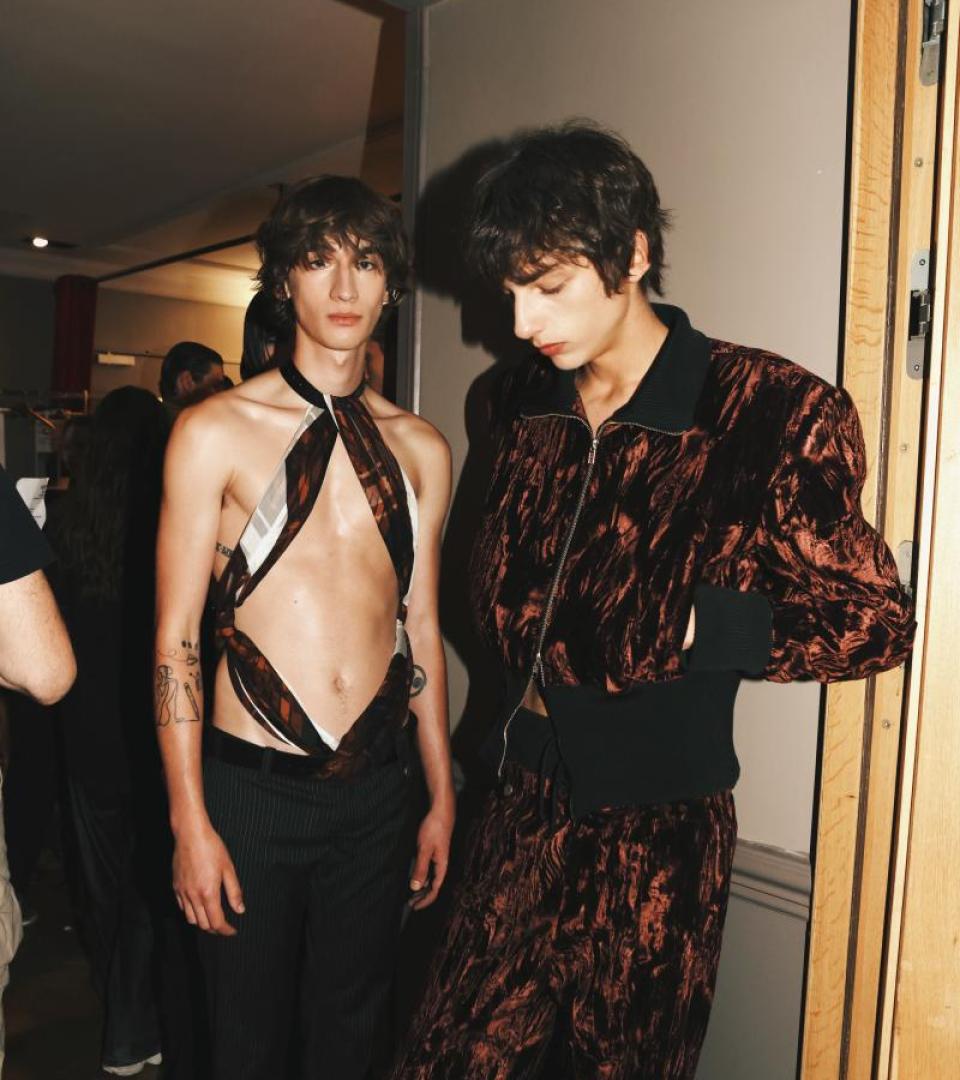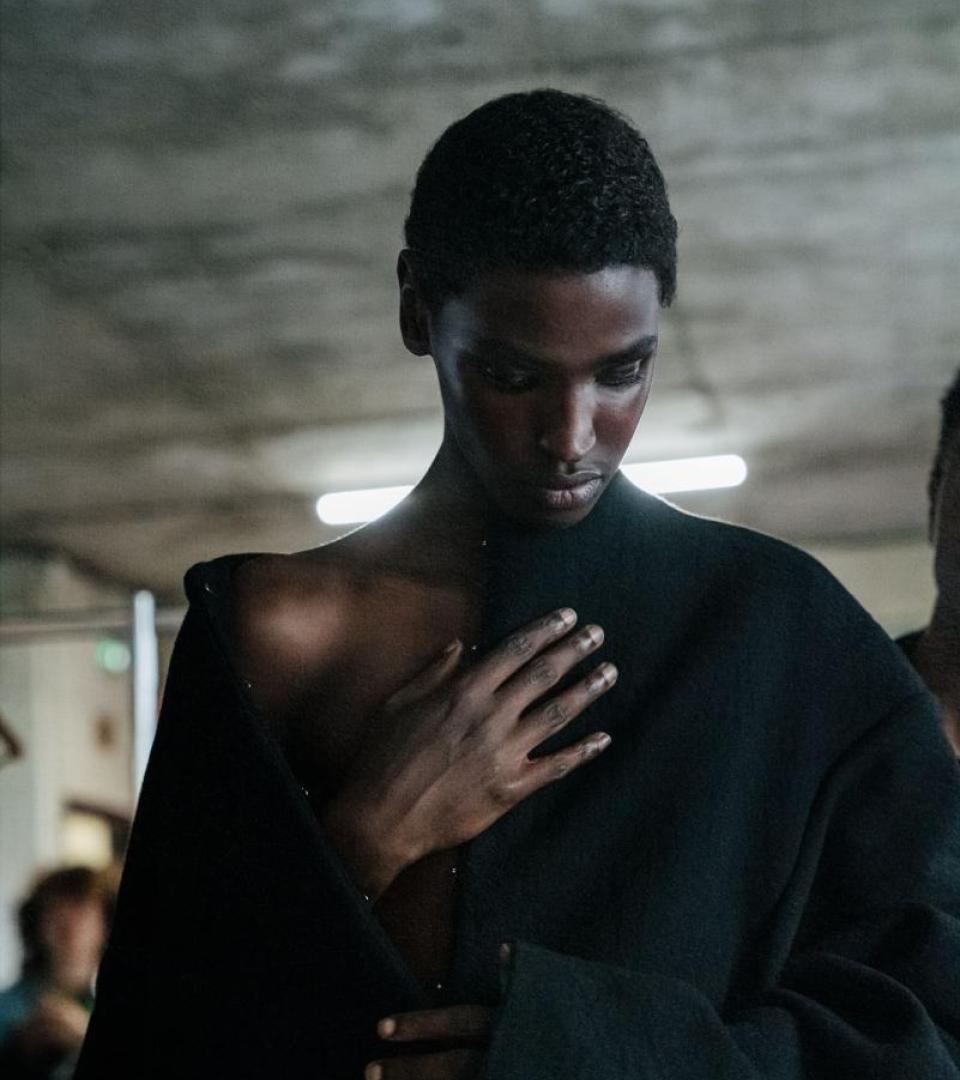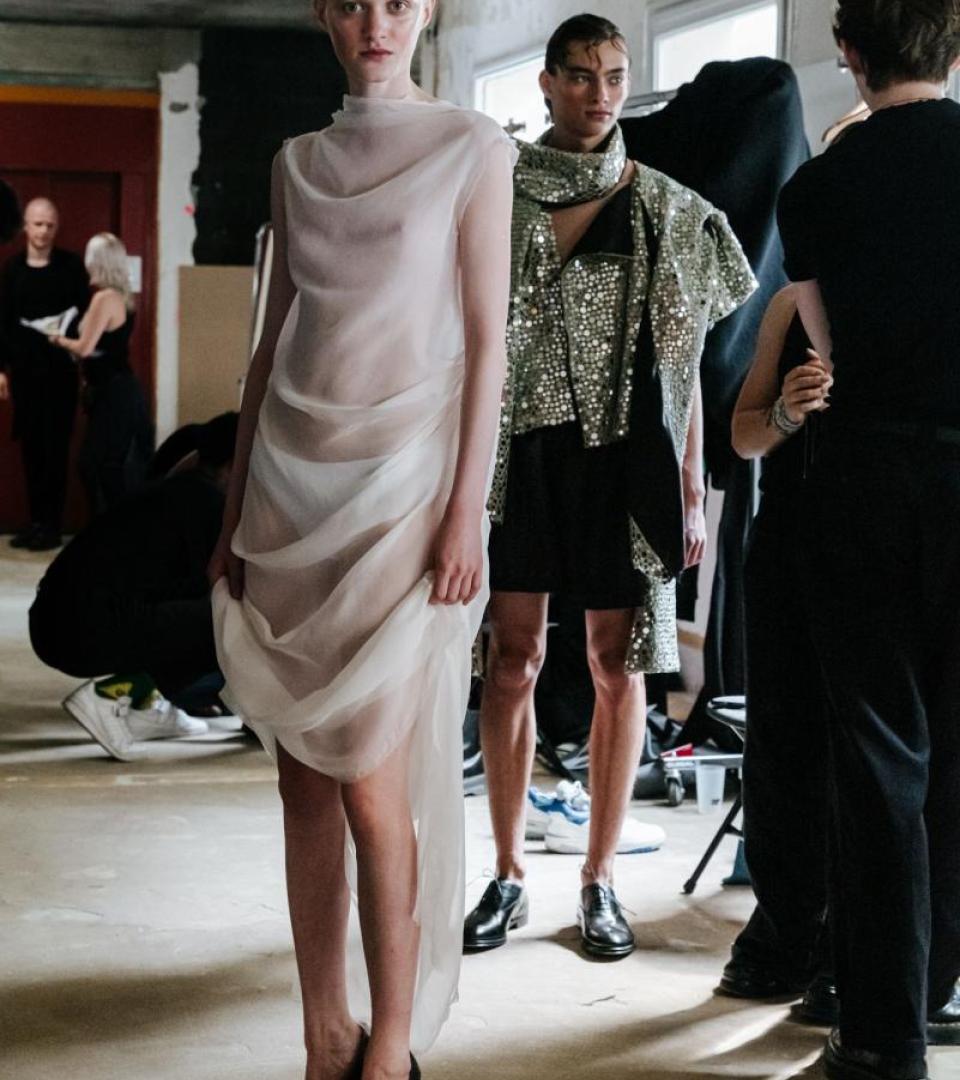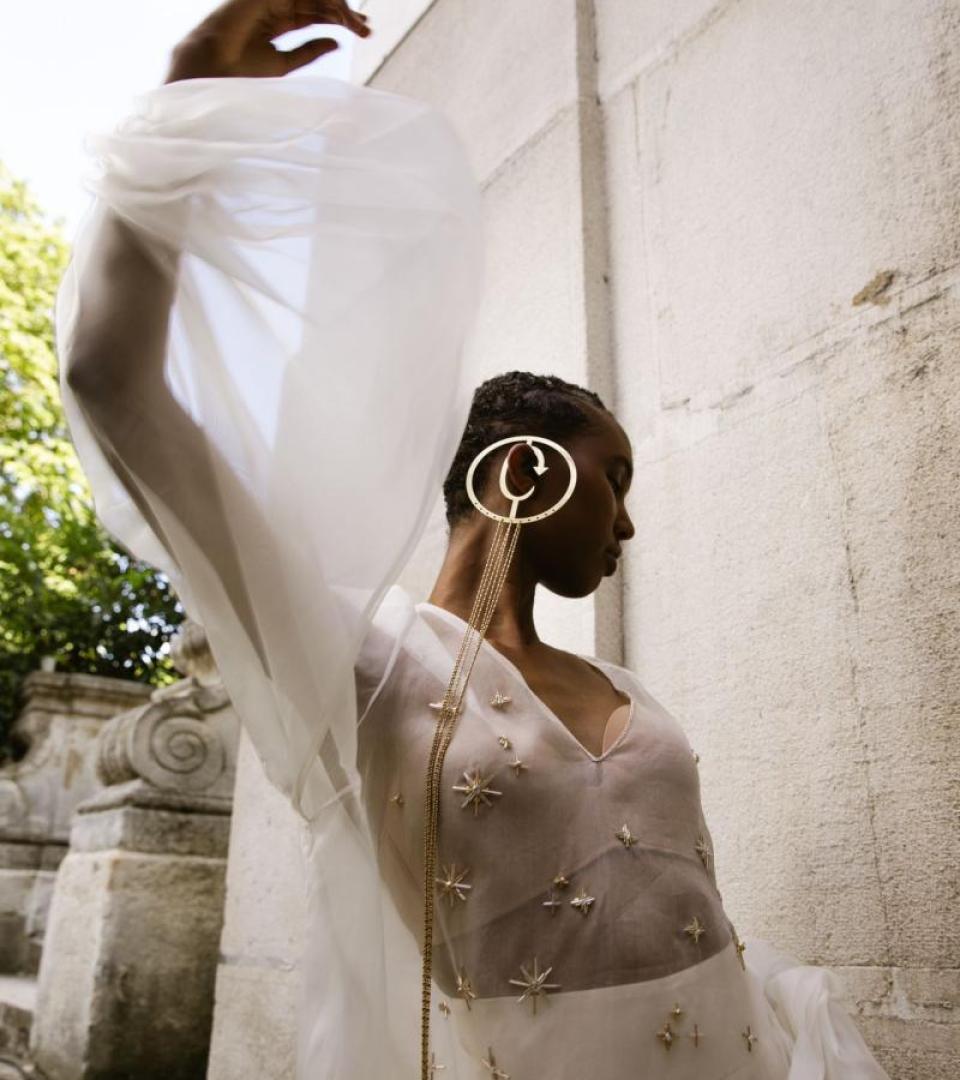What is one reason to be optimistic about the state of fashion going forward?
I think a fashion brand today has to keep its feet on the ground and take one step at a time. The Rochas brand is restarting from the archives of its founder, Marcel Rochas, to rebuild solid foundations based on the brand's precious heritage reread through my eyes.
Never before has the Rochas brand been as close as it is today to women and their feminine and sophisticated feeling —never exaggerated but confident and above all personal and free.
The collections being released are consistent in order to offer quality and uniqueness on different occasions of use, keeping the brand's DNA and the characteristics of the Rochas woman very clear.
In what ways do you think AI might benefit fashion?
I believe that no artificial intelligence can replace or achieve the intensity of the many nuances that a real body in motion can express, as it carries with it all the experiences made, recorded and transferred outside through the senses.
Can you suggest a fashion mantra for 2024?
I will suggest four:
Play with clothes, following your personal taste.
Find your expression playing with clothes.
Express yourself freely.
Unlock your possibilities (my favorite).
What impact might you hope to have on fashion?
The biggest goal for me would be to have the sensitivity to anticipate or, at least, feel the desires of women in a gentle way and with respect. A dress has no meaning until a woman wears it, giving it life and personality.
How do you see the evolution of women’s wardrobe?
The next women’s wardrobe, by now overflowing with comfortable garments inspired by street style and leisure time, is ready to devote a space for newness: well-made clothes, quality garments starting from the choice of raw material, passing through the study of the shape, up to the attention to tailoring, details and uniqueness. These characteristics all work together to create a wardrobe that makes you feel free to move comfortably, but not unkempt or fake unkempt. I believe that the wardrobe should not only contain flashy garments but also pieces that allow you to go unnoticed if you want to, while remaining sophisticated. In an unstable world like the one we are living in, I believe that fashion should be able to help us feel closer to our inner, everyday feelings. Sometimes we want to feel powerful, but I believe we should not be afraid to show ourselves as fragile with delicacy. No woman today wants to follow a trend or to dress up like a model during a fashion show; she seeks her own expression, selecting garments in line with her own sensibility and taste; combining pieces freely without following the looks seen on the catwalk. Those who choose to be themselves stand out from others by being unique and consistent.
Are there any other fields you would like to explore apart from fashion?
I would like to collaborate with contemporary dance and theater. I believe in the mixing of artistic languages to create something new. Many before me have inaugurated this kind of collaboration: from Gianni Versace for Bejart to Dior for Sharon Eyal. Marcel Rochas himself designed some costumes for the Ballets Russes in the late 1920s. The difference with me lies in the fact that, having studied dance, from the Cunningham technique to Pina Bausch's dance theatre and Ohad Naharin's Gaga technique, I understand the body in movement and its needs. And this is inevitably at the centre of my work.
This interview has been lightly edited.



